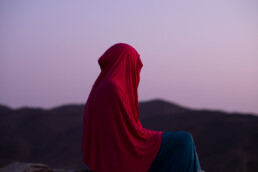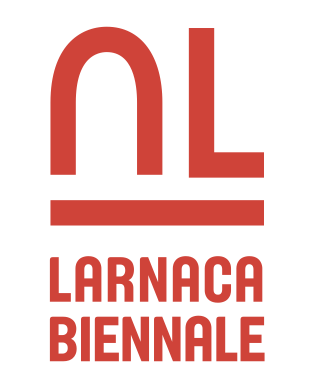We are pleased to present an exclusive interview with Bertan Selim, Head of Development at the Netherlands Dance Theater and member of the Supervisory Board of the Amsterdam Fund for the Arts, who is committed to supporting emerging artists and creating diverse perspectives in the art world. In 2020, he founded the VID Foundation for Photography to assist visual storytellers from the Balkans. In this interview, we discuss Bertan's thoughts on contemporary art and its ability to address themes such as home, displacement, and identity. We also delve into his role as a jury member for the "Home Away From Home" theme at the upcoming Larnaca Biennale 2023, and he shares his advice for emerging artists looking to submit their work for consideration.
As a jury member, what are your expectations for submissions related to the “Home Away From Home” theme of the Larnaca Biennale 2023?
I would be looking for something that dissociates from the physical and delves into the mental because home is often a mental construct. It is a comfort zone associated with certain memories, smells, etc. Therefore, I would like to see works that deconstruct home in a smart way, moving beyond traditional associations with nationality, ethnicity, land, and passport holders.
How do you approach the task of evaluating and selecting artworks for an exhibition like the Larnaca Biennale?
I believe it’s crucial to understand the contextual circumstances of the different proposals, especially those from the Middle East that relate to home due to migration or historical circumstances like Palestinian territories and settlements. Therefore, it’s important to take a contextual approach when evaluating the proposals, while still striving to select works that are truly innovative and push boundaries within the context of the exhibition.
What role do you think contemporary art plays in addressing themes such as home, displacement, and identity?
Contemporary art plays a really important role because it takes us out of the reality we’re conditioned to look at, especially through the standards served to us by the media and education systems around the world. Contemporary art informs us on these concepts by taking us out of the conventional and daily ways of looking at them. It’s refreshing because it offers an alternative, which could be a healthier way to look at these concepts.
How important is it to you that the selected artworks reflect a diverse range of perspectives and experiences?
I believe that a diverse range of perspectives that the artwork offers is fundamental because it should provide a plethora of people’s experiences that inform their artwork. In that sense, diversity illustrates the uniqueness in the way that art is produced, in a mindful and completely appropriated way by the artist. It’s about reflecting independent, individual experiences related to these concepts. Therefore, diversity is inherent, but it’s essential to be mindful of how we define diversity within the selection process, whether it be geographical, gender, social circumstances, or other representational aspects.
Could you discuss a particularly memorable artwork or exhibition that you have seen in the past and what made it stand out to you?
I remember an exhibition called ‘A Place to Begin’ by Mohamed Mahdy, which was held in the Shelter Art space in Alexandria.

In your opinion, what are some of the current trends or themes that are prevalent in contemporary art today?
I am not sure if there are specific trends or themes in contemporary art because I believe that contemporary art reflects what is happening in the world. I am more of a fan of engaged artists who are not simply following what is popular or trending in the media or the world, but rather they are focused on exploring the untold stories and issues that are not often discussed. So, while there may be a general theme at art fairs such as Art Basel, I don’t know if it is reflective of the broader world outside of the Western context. I think there are many different issues and problems in the world, and the artists from diverse contexts are talking about these issues, which makes it difficult to draw conclusions about any particular theme.
How do you see the role of the Larnaca Biennale and similar events evolving in the coming years, and what impact do you think they have on the art world as a whole?
I think it is very important for events like the Larnaca Biennale to offer diversity, especially in terms of the context of the art and the artists represented. It would be interesting to showcase art and artists from underrepresented environments, and to see how that is interpreted in a context like Larnaka or Cyprus more broadly. I believe it is becoming more important, and it highlights the blind spots of many people who work in the art industry in understanding where the talent is coming from. It is exciting to see the evolving role of these institutions and events, and they can become a go-to in the future, almost like a gold mine of artistic talent when curated and selected properly.
What advice would you give to emerging artists who are submitting their work for consideration in the Larnaca Biennale 2023 or similar exhibitions?
My advice to emerging artists submitting their work for consideration in the Larnaca Biennale is to be honest in their approach and how they define their work. They should also show a sense of vulnerability and have a fundamental understanding of their work. I want to highlight the importance of research and understanding what the artist is trying to convey, as an artwork can be stunning and beautiful, but without proper background information and consideration of sensitivities, it may be less impactful.
